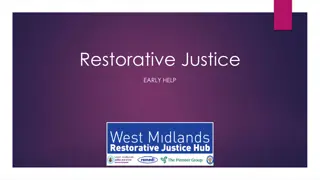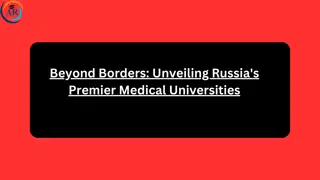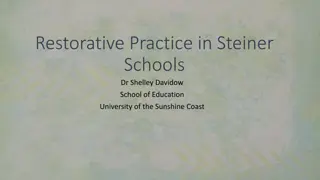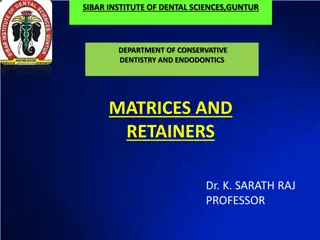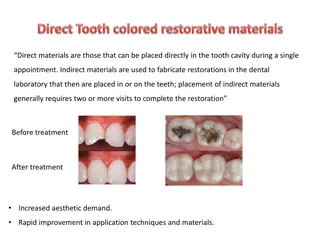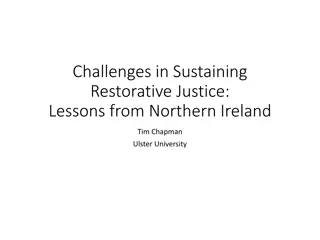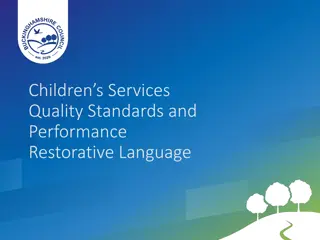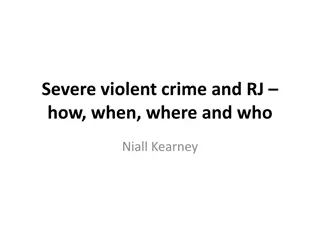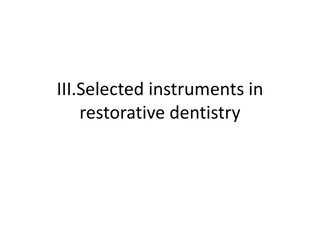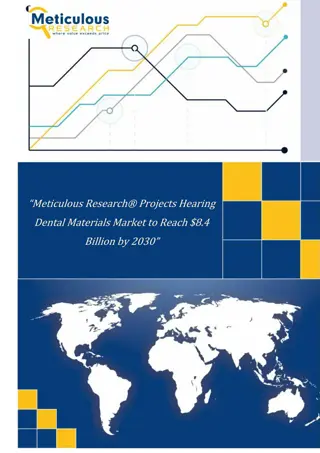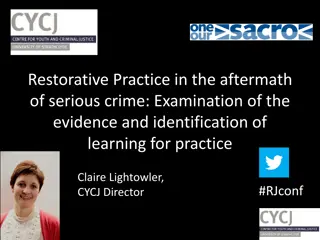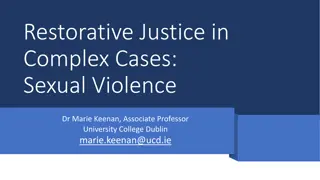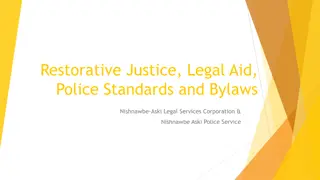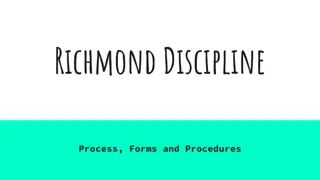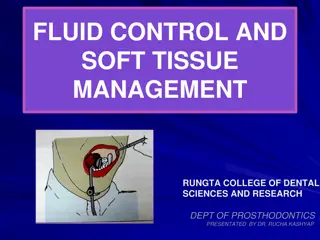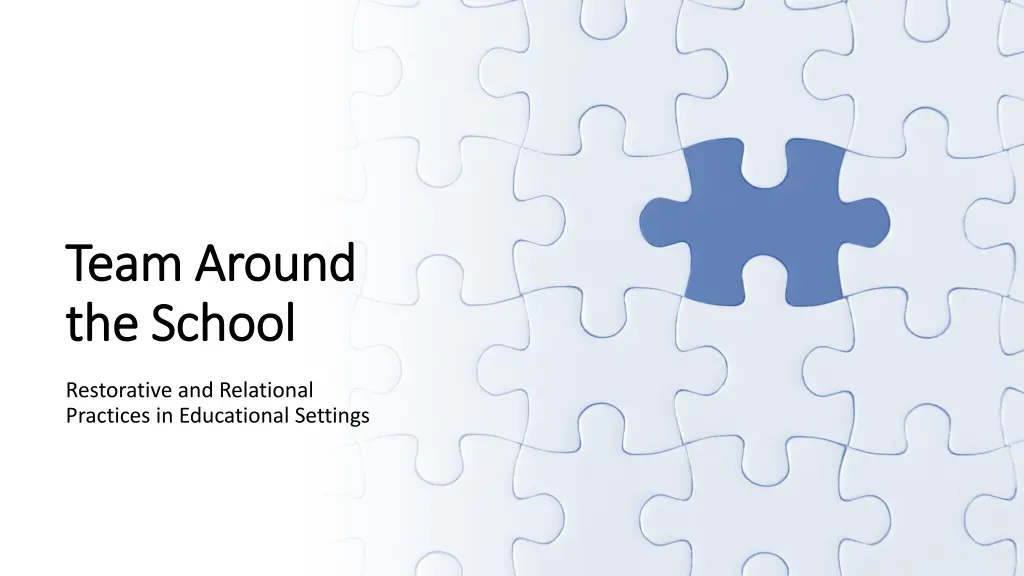
Restorative Practices in Educational Settings: Building Strong Communities
"Explore the impact of Restorative Practices in schools, fostering positive relationships, reducing conflicts, and enhancing overall well-being. Learn how implementing these approaches can transform educational environments and promote a culture of empathy and accountability."
Uploaded on | 0 Views
Download Presentation

Please find below an Image/Link to download the presentation.
The content on the website is provided AS IS for your information and personal use only. It may not be sold, licensed, or shared on other websites without obtaining consent from the author. If you encounter any issues during the download, it is possible that the publisher has removed the file from their server.
You are allowed to download the files provided on this website for personal or commercial use, subject to the condition that they are used lawfully. All files are the property of their respective owners.
The content on the website is provided AS IS for your information and personal use only. It may not be sold, licensed, or shared on other websites without obtaining consent from the author.
E N D
Presentation Transcript
Team Around Team Around the School the School Restorative and Relational Practices in Educational Settings
Introduction 19 years as a secondary school teacher and Pastoral Leader RJC Approved Facilitator Training (2015) Essex Restorative and Mediation Practitioner Training (2023) Appointed in December 2022 to lead on Restorative Justice at Annie Henken BA (Hons) Applied Social Science/Sport Science PGCE NPQSL DSL Barnet Council. Passionate advocate of restorative approaches working across education, criminal justice, social care and community groups
What is Restorative Practice? A social science used to explore the creation of positive communities through the building, maintaining and repair of robust, resilient relationships that are resistant to challenge. It works by tuning into and applying the basic principles of humanity such as kindness, openness, empathy and sincerity. When conflict occurs, RP provides a framework in which to resolve it, prioritising the voice of those involved, supporting accountability and finding a solution to resolve the harm and minimise the chance of a reoccurrence. RP is not simply as a response to undesired behaviour but an embedded philosophy that governs all interactions in staff rooms, classrooms and playgrounds. Concepts that feed into restorative approaches include, Social Learning Theory, Operant Conditioning Theory, Cognitive Dissonance and Non-Violent Communication.
Schools are a microcosm of society and a place where children and young people can learn and practice social norms and expectations in relative safety. What are the benefits of Restorative Approaches in schools? Schools that operate restoratively can create a positive and productive environment in which to work and learn which has a measurable, positive impact on wellbeing. People thrive in an environment that is unified, consistent, predictable, and fair these conditions create emotional safety and can help relationships flourish, even when things go wrong. Reduced number of incidents that that negatively affect the goals, values, attainment and ambitions of individuals and the wider community.
When Restorative Practice drives our culture, ethos and values, we can: Develop Develop emotional literacy, truth telling, accountability accountability, responsibility, self empathy empathy; Improve Improve behaviour, attendance, learning environment, teaching, self-esteem, social and communication skills; Increase Increase, happiness, pro pro- -social behaviours Reduce Reduce bullying, exclusions, conflict sanctions, risky behaviour; risky behaviour; Create Create a safe climate in which to work that has meaningful and robust relationships able meaningful and robust relationships able to withstand challenge. to withstand challenge. self- -awareness awareness, social behaviours, safety; conflict, need for work and learn learn
What does RP look like in school settings? Focuses on recognising and normalising behaviour that adds value to the community or helps individuals and the community achieve their goals. Adopts a shared (affective) language to support the safe communication of feelings to resolve conflict or reinforce positive behaviour. Commits to the use of a restorative conferencing framework to resolve conflict and harm, placing the onus on those affected to solve the problem.
Circles Circles Conferencing Conferencing Affective Affective Language Language
Alterations Tailoring outline The Responsive Counsellor
When you Identifies the issue Highlights your emotional connection to the issue I feel The route to a satisfactory resolution or conclusion I need Alterations Tailoring outline
Examples of good (restorative) practice Line management meetings reorganised to prioritise check in ; Year 6 pupils co-designed new reward and recognition chart; Pupils use affective language prompt card to resolve their own conflict; Secondary school created RP delivery team to support colleagues with high numbers of behaviour points. Painted RP resource on playground helping pupils to resolve incidents quickly so they don t disrupt learning time.
Restorative Practice and Safeguarding Restorative interventions around bullying should invest time in working with the harmer to develop empathy, truth telling and personal accountability Schools should normalise telling as a way to create a safe culture for all and encourage talking through proactive circles Family conferences can have significantly positive effect in reducing bullying. It is important to involve parents and carers to ensure the message is consistent Separating the behaviour from person leaves the door open for acceptance of the wrongdoing by the harmer, reconciliation, repair and reintegration into the community belonging is crucial Peer mediation and trusted peer programmes can create high levels of safety in the community Zero tolerance is largely incongruent with restorative approaches. A high challenge/high support framework is more inclusive, although the need for safety is paramount Allyship can be used to develop an understanding of cultural and identity differences and can be a powerful antidote to conflict Bystander training can create safety for those at risk of harm in the moment Sanctions need to be supported by restorative conferencing to ensure that the harmer acknowledges their role in the wrongdoing and the harmed feels safe and reassured The development of character feeds directly into the Ofsted inspection framework and schools who have robust, pupil centred anti-bullying policies can meet personal development objectives (although this should not be the driver) All schools have values. To what extent are these values modelled on a daily basis so they become who we are ?

